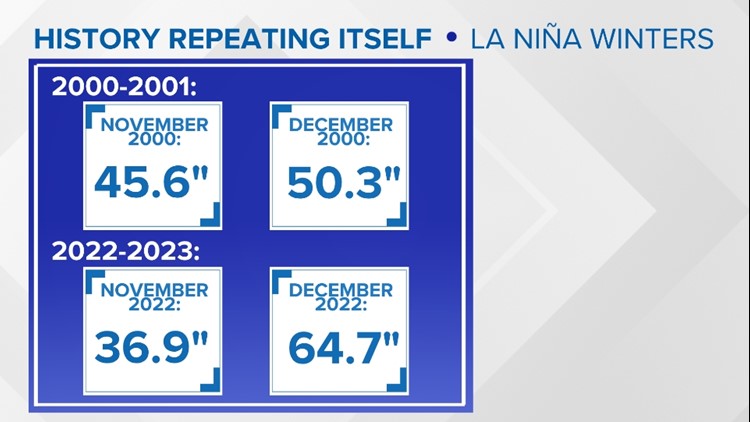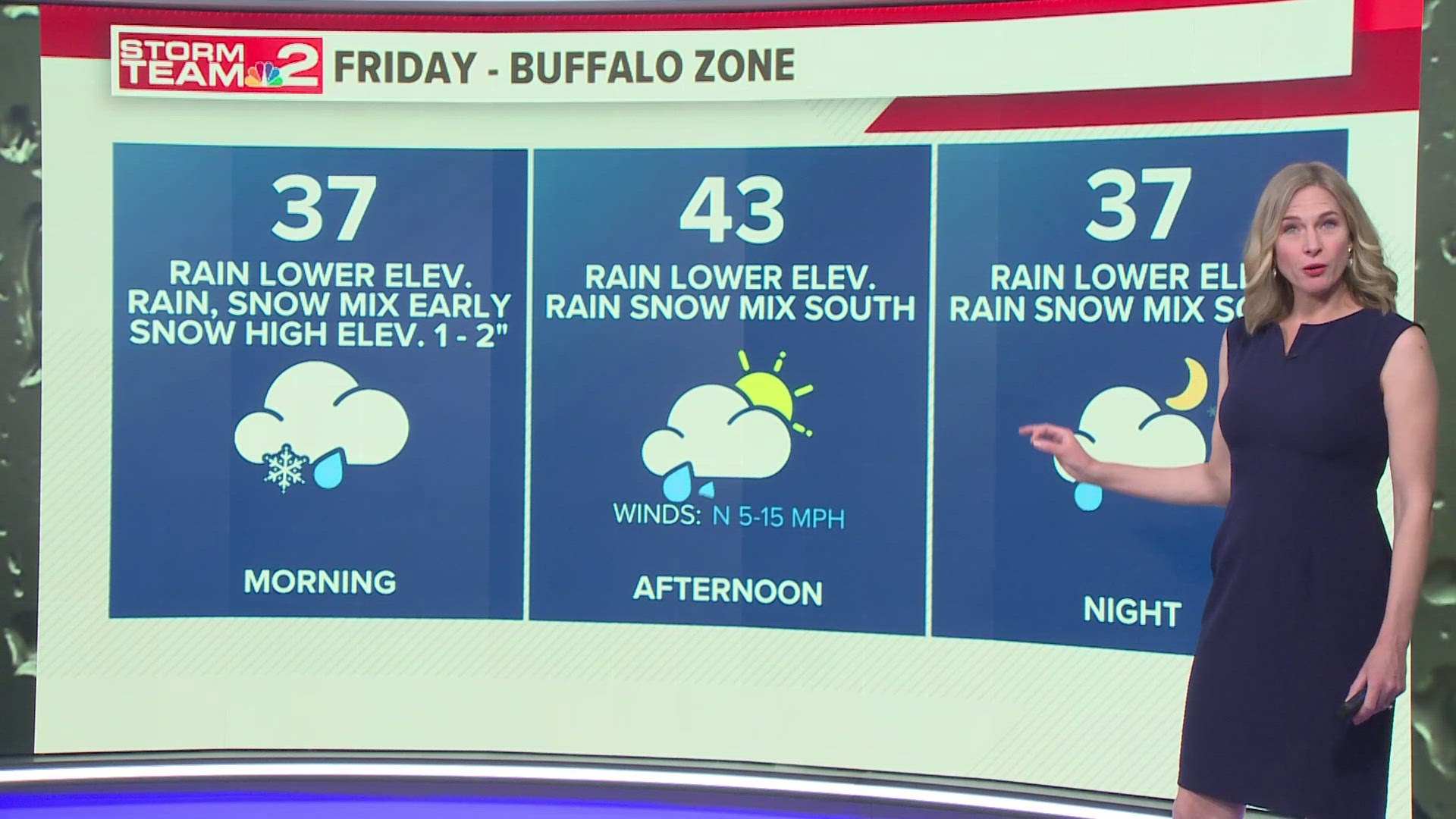BUFFALO, N.Y. — With over 100 inches of snow falling this winter mainly from two historic storms, many Western New Yorkers are wondering what the rest of this, so far, relentless winter could look like.
When it comes to seasonal forecasting, one primary climate driver is the El Niño Southern Oscillation, commonly known as the weather phenomenon that produces an El Niño or La Niña. This year, the winter of 2022-2023 is being influenced by a weak La Niña and is the third winter in a row with the one. Since the 1950s, that has only happened twice before this winter.
And looking back to those two timeframes, there are some similarities between one third-year La Niña and what's recently occurred in November and December of 2022. That just happens to be the winter of 2000-2001, the second snowiest winter on record in the city of Buffalo.
Let's start with November of 2000 compared to November of 2022. November of 2000 is the snowiest November on record for Buffalo with a tally of 45.6 inches. The major contributor to that monthly total was a lake effect event from November 18 though 23, 2000. Over 40 inches of snow fell within those five days, and 24.9 inches along on Nov. 20, 2000.
If this feels strangely familiar, it should! The lake effect snowstorm this past November occurred from November 17 through 21 and brought over three feet of snow the the city. On Nov. 19, 2022, a daily snowfall total of 21.5 inches of snow. November of 2022 now ranks as the second snowiest on record the Buffalo, just behind November of 2000, with 36.9 inches of snow.
Similarities between the two winters don't stop there. Next up is December. December of 2000 also had above average snowfall for the month.
Unlike this past December, though, which jumped into the record books because of the Blizzard of 2022, that December was snowy because of the daily snowfall the city received from an active weather pattern. There were only four days in December of 2000 without measurable snow. That one is the ninth-snowiest on record for December with 50.3 inches of snow.
And while this past December is now the third-snowiest on record with 64.7 inches for the month, the bulk of that snow fell between two events: the Blizzard of 2022 and a lake effect snow from Dec. 16 to 18, 2022.
So knowing how similar this winter is shaping up to be to the winter of 2000-2001 with the presence of a weak La Niña, here's what happened the rest of that winter a over two decades ago. The results might surprise you.
January of 2001 had below average snowfall and no major snow events. Temperatures were pretty seasonal and chilly, but big winter storms or lake effect events were pretty much a miss. Only 19.6 inches of snow to account for that month.
February of 2001 was also below average for snowfall. Needless to say there were no major snow events. Buffalo didn't even get a foot of snow total for the month, only 9.8 inches. There were even two 60 degree days that February on the 9th and 25th of the month.
As for Lake Erie ice, the lake did not completely freeze over that winter but came close. The most ice coverage measured on Lake Erie was on Feb. 19, 2001, at 94 percent.
Finally, March of 2001 is worth a mention as it ended up being the third snowiest on record for the month with 32.8 inches of snow falling as spring began. It wasn't from one big storm or lake effect event though, rather a few synoptic system that brought in a few inches of snow each.
So if history repeats itself, Western New York could see a bit of a break from the major winter storms over the next two months. But that's a big "if."
Climate drivers such as the La Niña can influence large scale systems and seasonal trends, leading us to be able to draw some similarities between like years and events. However, one local climate driver, Lake Erie, can always have the final say with how much snow falls in a season.



